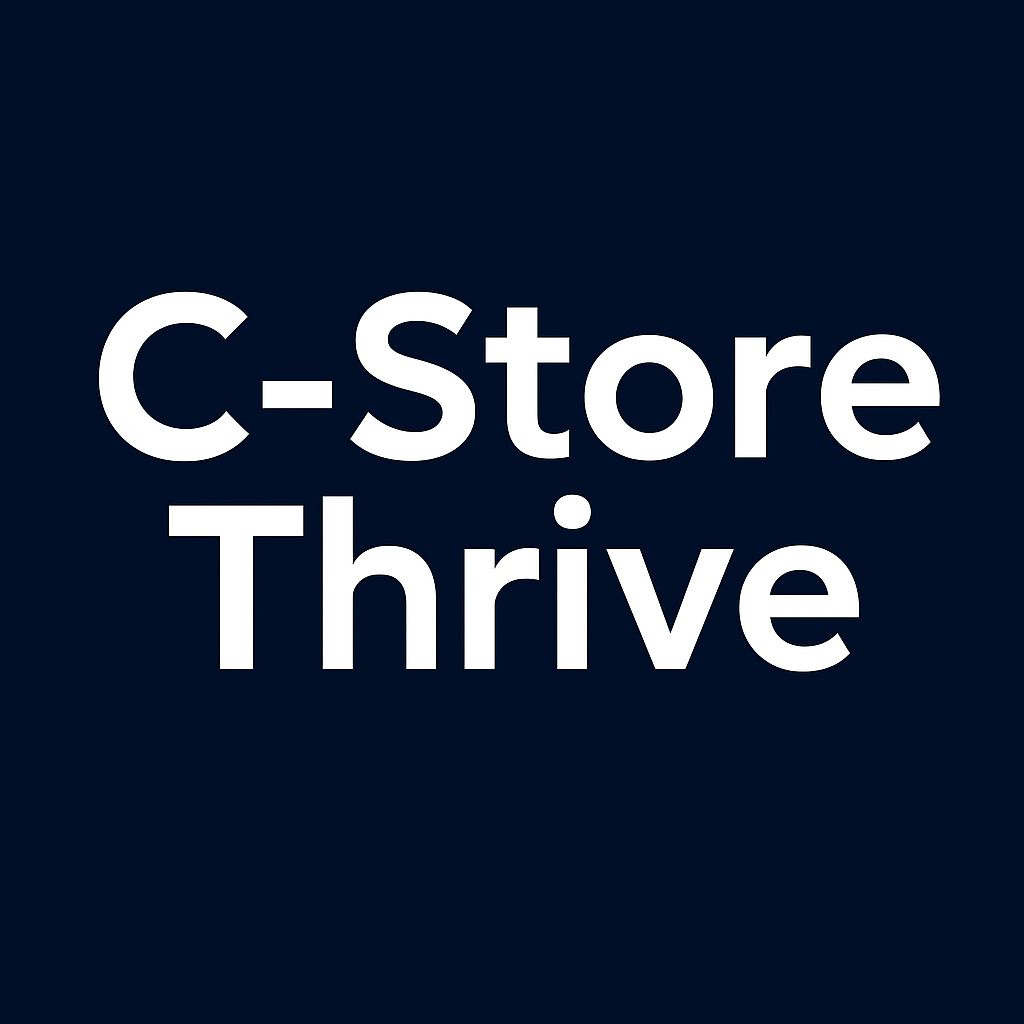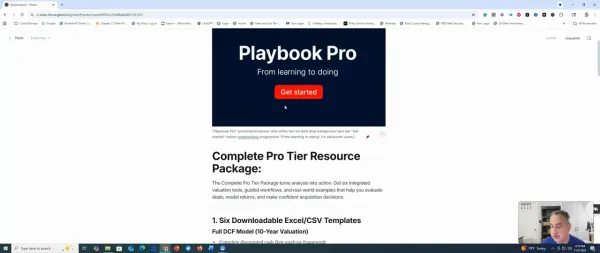Understanding the Basics of Retail Accounting for C-Stores
Financial management is the backbone of successful convenience store operations. C-stores face unique accounting challenges with dual revenue streams, high-volume transactions, and complex regulatory requirements demanding specialized knowledge and automation.

Financial management is the backbone of successful convenience store operations. Master these retail accounting fundamentals to gain clear insights into your business performance, ensure compliance, and make data-driven decisions that drive profitability.
The convenience store industry operates on razor-thin margins where every dollar counts. With over 150,000 C-stores nationwide and the majority being independently owned, understanding retail accounting isn't just helpful—it's essential for survival and growth. Independent owners who master these financial fundamentals consistently outperform those who don't, often achieving net profit margins of 2-5% compared to break-even or negative returns for poorly managed stores.
Unlike other retail businesses, convenience stores face unique accounting challenges that require specialized knowledge and systems. From managing dual revenue streams (fuel and retail) to tracking high-volume, low-value transactions averaging over 1,100 customers daily, C-store accounting demands precision and automation to maintain accuracy and profitability.
What Makes C-Store Retail Accounting Different
The Complexity of Multiple Revenue Streams
Convenience stores are essentially multiple businesses operating under one roof. Your accounting system must accurately track and analyze diverse revenue categories, each with different margin structures and operational requirements:
- Fuel sales typically represent 70% of revenue but only 3-5% margins
- Food service delivers the highest profitability at over 37% of store profits
- Tobacco products require strict regulatory compliance and age verification tracking
- Lottery sales involve complex commission structures and regulatory reporting
- ATM services generate passive income but require fee tracking and reconciliation
High-Volume Transaction Management
The average convenience store processes over 400,000 transactions annually, making manual tracking impossible. This volume demands robust systems that can:
- Automatically categorize sales by department and payment method
- Track inventory movement in real-time across multiple categories
- Reconcile daily cash flows with minimal manual intervention
- Generate accurate reports for decision-making and compliance
Regulatory and Tax Complexities
C-stores face unique regulatory requirements that directly impact accounting practices:
- Multiple sales tax jurisdictions for different product categories
- Tobacco tax compliance with frequent rate changes
- Fuel tax reporting including environmental and road use taxes
- Lottery commission reporting and remittance requirements
- Food service health department compliance and reporting
Core Retail Accounting Concepts for C-Stores
Understanding the Retail Method vs. Cost Method
The retail method is particularly well-suited for convenience stores because it simplifies inventory valuation and provides quick insights into profitability. This method uses the cost-to-retail ratio to estimate inventory values based on selling prices rather than individual item costs.
How the Retail Method Works:
- Calculate your cost-to-retail ratio: Total cost of goods ÷ Total retail value
- Track sales at retail prices: Use your POS system to monitor daily sales
- Estimate ending inventory: Subtract retail sales from goods available for sale
- Convert to cost basis: Apply the cost-to-retail ratio to determine actual costs
For example, if you purchase goods costing $70 to sell for $100, your cost-to-retail ratio is 70%. When you sell $4,000 worth of merchandise at retail, your cost of goods sold is $2,800 (70% × $4,000).
Inventory Costing Methods: FIFO vs. LIFO
Choosing the right inventory costing method significantly impacts your financial statements and tax obligations:
First-In, First-Out (FIFO) assumes older inventory is sold first, making it ideal for:
- Perishable items like dairy, bread, and prepared foods
- Products with expiration dates where rotation is critical
- Businesses wanting higher reported profits during inflationary periods
Last-In, First-Out (LIFO) assumes newer inventory is sold first, which can:
- Reduce tax liability during periods of rising costs
- Better match current costs with current revenues
- Provide tax advantages for non-perishable goods like tobacco and general merchandise
Most convenience stores use a hybrid approach: FIFO for perishables and time-sensitive items, LIFO for shelf-stable products where tax advantages outweigh operational concerns.
Essential Financial Statements for C-Stores
Income Statement (Profit & Loss)
Your P&L statement reveals the profitability of each revenue stream and expense category. Key components include:
Revenue Categories:
- Fuel sales (if applicable)
- Food service and prepared foods
- General merchandise
- Beverages and tobacco
- Other services (ATM, lottery, etc.)
Cost of Goods Sold:
- Direct product costs by category
- Fuel costs (if applicable)
- Shrinkage losses (target: under 2% of sales)
Operating Expenses:
- Labor costs (typically 14% of sales)
- Rent and utilities
- Insurance and security
- Professional services
- Equipment depreciation
Balance Sheet
Your balance sheet provides a snapshot of your store's financial position:
Current Assets:
- Cash and bank accounts
- Inventory (your largest current asset)
- Accounts receivable
- Prepaid expenses
Fixed Assets:
- Equipment and fixtures
- Leasehold improvements
- Less: Accumulated depreciation
Liabilities:
- Accounts payable to suppliers
- Sales tax payable (multiple jurisdictions)
- Payroll tax liabilities
- Equipment financing
Cash Flow Statement
Cash flow management is critical for C-stores due to daily operational demands:
Operating Activities:
- Cash from daily sales
- Payments to suppliers
- Payroll and operating expenses
- Tax payments
Investing Activities:
- Equipment purchases
- Store improvements
- Asset disposals
Financing Activities:
- Loan proceeds and payments
- Owner investments and withdrawals
Daily Accounting Procedures
The Daily Reconciliation Process
Consistent daily reconciliation is fundamental to accurate C-store accounting. This process should include:
Morning Setup:
- Start with consistent cash amounts in each register
- Verify overnight deposits cleared properly
- Review any discrepancies from the previous day
Throughout the Day:
- Monitor cash drawer levels to prevent shortages
- Track void transactions and returns carefully
- Ensure proper transaction coding by department
End-of-Day Procedures:
- Generate Z-tape reports from your POS system
- Count all cash drawers and safe contents
- Reconcile credit card transactions with processor reports
- Record lottery sales and commission calculations
- Document any discrepancies for investigation
Inventory Management Integration
Your daily procedures should seamlessly integrate with inventory management:
- Automatic inventory deduction through POS integration
- Real-time stock level monitoring to prevent stockouts
- Daily shrinkage calculation comparing POS sales to physical counts
- Vendor delivery verification against purchase orders
Technology Solutions for C-Store Accounting
Point-of-Sale System Integration
Modern C-store accounting relies heavily on integrated POS systems that automatically categorize transactions and update inventory levels. Key features include:
- Department-based sales tracking with customizable categories
- Automatic tax calculation for multiple jurisdictions
- Real-time inventory updates with low-stock alerts
- Employee tracking for accountability and performance analysis
Accounting Software Selection
QuickBooks remains the most popular choice for C-stores due to its fuel-specific features and POS integration capabilities. However, consider these factors when choosing software:
Essential Features:
- Multi-location support (if applicable)
- Industry-specific reporting for fuel, tobacco, and food service
- Tax compliance tools for complex C-store requirements
- Automated bank reconciliation to save time and reduce errors
Popular Options:
- QuickBooks Online/Desktop: Best overall for most C-stores
- Xero: Strong cloud-based alternative with excellent inventory features
- Sage: Good for multi-location operations
- Industry-specific solutions: Consider specialized C-store accounting software for complex operations
Automation and Efficiency
Implement automation wherever possible to reduce manual errors and save time:
Daily Sales Recording:
- Automated Z-tape import from POS to accounting software
- Bank deposit reconciliation through online banking integration
- Credit card processing with automatic fee deduction
Monthly Procedures:
- Automated inventory adjustments based on physical counts
- Vendor payment processing through accounts payable automation
- Financial report generation with customized templates
Key Performance Indicators to Monitor
Profitability Metrics
Track these essential KPIs to ensure financial health:
Gross Margin by Category:
- Fuel: 3-5% (high volume, low margin)
- Food service: 60-70% (low volume, high margin)
- Beverages: 25-35% (moderate volume, good margin)
- Tobacco: 8-12% (regulated pricing, consistent demand)
- General merchandise: 20-30% (variable volume and margin)
Overall Financial Health:
- Total gross margin: Target 25-35%
- Net profit margin: Aim for 2-5%
- Inventory turnover: 12-24 times annually
- Sales per square foot: $300-500 annually
Operational Efficiency Metrics
Monitor these indicators to identify improvement opportunities:
- Shrinkage rate: Keep below 2% of sales
- Labor cost percentage: Target 8-12% of sales
- Average transaction value: Benchmark against local competitors
- Customer transaction count: Track daily patterns and trends
Cash Flow Management Strategies
Optimizing Working Capital
Effective cash flow management requires attention to three key components:
Days Sales Outstanding (DSO): Minimize time between credit sales and cash collection
Days Payable Outstanding (DPO): Optimize payment timing to vendors while maintaining good relationships
Days Sales in Inventory (DSI): Balance inventory levels to avoid stockouts while minimizing carrying costs
Seasonal Planning
C-stores experience predictable seasonal patterns that require cash flow planning:
Summer Months:
- Increased fuel demand for travel
- Higher beverage sales due to heat
- Ice and cold food category expansion
Holiday Periods:
- Gift card sales provide immediate cash flow
- Party supplies and seasonal items
- Extended hours increase labor costs
Back-to-School/Winter:
- Hot beverage and comfort food demand
- Storm preparation item stockpiling
- Heating cost increases in utilities
Compliance and Tax Considerations
Multi-Jurisdiction Tax Management
C-stores often deal with complex tax scenarios requiring careful tracking:
Sales Tax Variations:
- Different rates for food vs. non-food items
- Tobacco tax changes that occur frequently
- Fuel tax components including federal, state, and local levies
Documentation Requirements:
- Detailed transaction records by tax category
- Vendor exemption certificates for business customers
- Monthly and quarterly tax filing compliance
Regulatory Reporting
Maintain compliance with industry-specific requirements:
- Lottery commission sales and payment reporting
- Tobacco license renewal and compliance documentation
- Health department records for food service operations
- Environmental compliance for fuel storage and handling
Common Accounting Mistakes to Avoid
Revenue Recognition Errors
Mixing fuel and retail revenues: Always separate these streams for accurate margin analysis
Improper lottery accounting: Track gross sales vs. net commission accurately
Gift card handling: Record as liability until redeemed, not immediate revenue
Expense Classification Problems
Personal vs. business expenses: Maintain strict separation for tax compliance
Capital vs. operating expenses: Properly classify equipment purchases for depreciation
Direct vs. indirect costs: Accurately allocate shared expenses across revenue streams
Inventory Management Issues
Inconsistent counting procedures: Establish standardized monthly inventory processes
Ignoring shrinkage patterns: Track and investigate unusual loss patterns
Poor vendor relationship management: Late payments can impact product availability and pricing
Building Financial Controls
Internal Controls Framework
Establish strong internal controls to protect your business:
Cash Handling:
- Dual controls for large cash transactions
- Daily deposit requirements to minimize theft risk
- Security camera coverage of all cash handling areas
- Regular surprise cash counts by management
Inventory Protection:
- Vendor delivery verification procedures
- Employee purchase policies and tracking
- Regular cycle counting programs
- Loss prevention training for all staff
Audit Preparation
Maintain records that support easy auditing:
Document Organization:
- Monthly bank reconciliations with supporting documentation
- Vendor invoices organized by category and date
- Tax compliance records easily accessible
- Employee time tracking and payroll records
Professional Support Resources
When to Hire Professional Help
Consider professional accounting assistance when:
- Annual revenue exceeds $500,000
- Multiple locations require consolidated reporting
- Complex tax situations arise from diverse revenue streams
- Growth planning requires sophisticated financial analysis
Industry-Specific Expertise
Look for accountants who understand C-store operations:
- Experience with fuel accounting and environmental compliance
- Knowledge of tobacco tax regulations and reporting
- Understanding of lottery commission structures
- Familiarity with food service health department requirements
Conclusion
Mastering retail accounting fundamentals is essential for C-store success in today's competitive marketplace. The combination of high transaction volumes, diverse revenue streams, and complex regulatory requirements demands systematic approaches and robust technology solutions.
Start with the basics: establish consistent daily reconciliation procedures, implement integrated POS and accounting systems, and focus on the key performance indicators that drive profitability. As your understanding grows and your business expands, gradually add more sophisticated analysis and controls.
Remember that effective accounting is not just about compliance—it's about gaining the insights needed to optimize operations, identify growth opportunities, and build long-term financial stability. With 58% of C-store operators optimistic about 2025, now is the perfect time to strengthen your financial foundation and position your business for sustained success.
The investment in proper accounting systems and procedures will pay dividends through improved cash flow management, better inventory control, enhanced regulatory compliance, and most importantly, the clear financial visibility needed to make informed business decisions that drive profitability and growth.
Ready to upgrade your C-store's accounting practices? Start with daily reconciliation procedures and gradually implement the systems and controls outlined in this guide. Consider professional consultation for complex situations, and remember that consistent, accurate financial management is the foundation of every successful convenience store operation.





